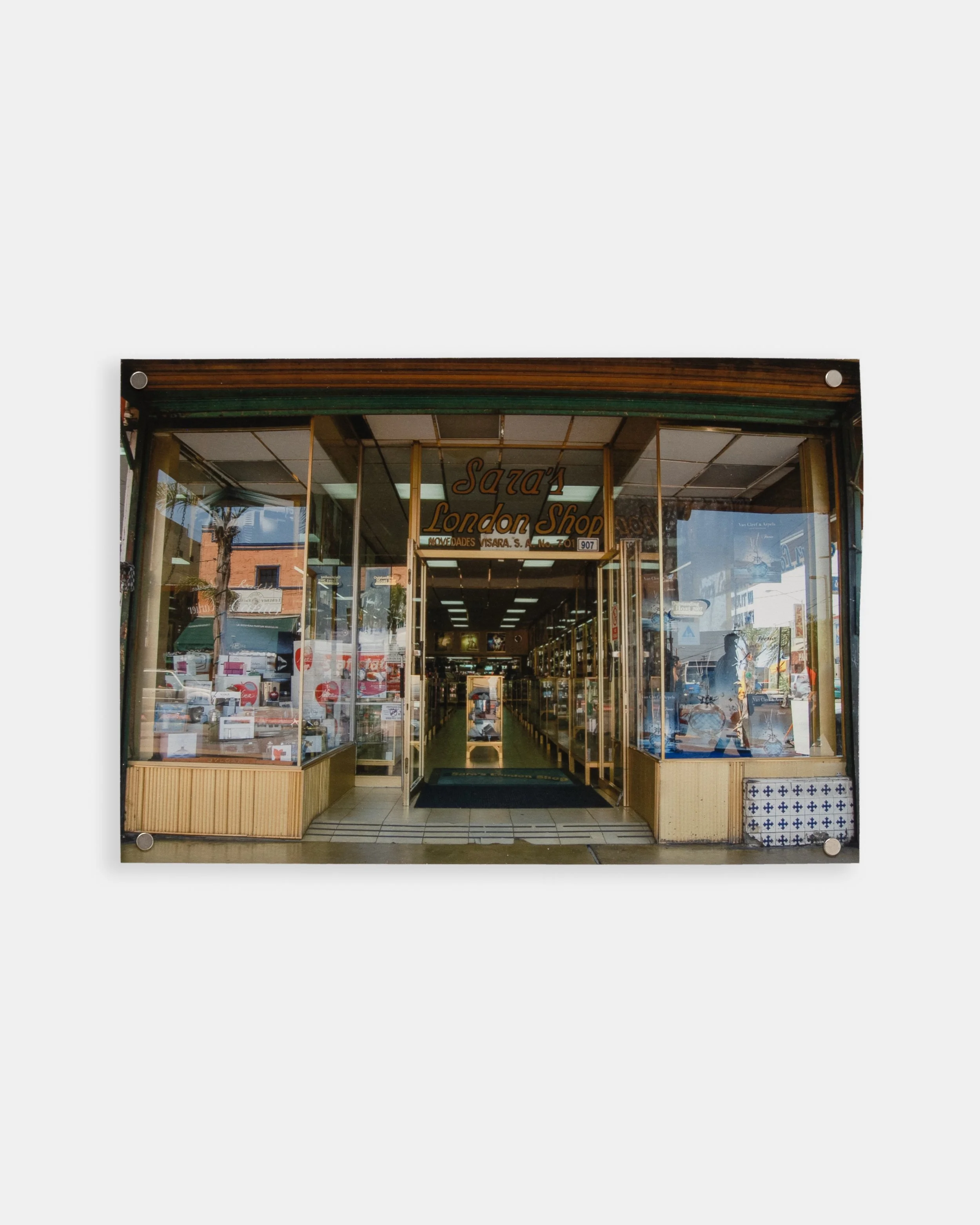Salvaged Remix
Ana Andrade and Matthew Taylor Williams
Curated by Lizzie Zelter
January 20 - February 25, 2024
Two Rooms is proud to present Salvaged Remix, a two-person exhibition featuring Ana Andrade (b. 1987, San Diego, CA / Tijuana, BC) and Matthew Taylor Williams (b. 1990, San Clemente, CA). Both artists embrace the material impermanence of their surroundings, drawing from their cities' remnants. The past, whether it has survived or decomposed with time, is fodder to remix. Andrade’s photographs and Williams’ sculptures share an attentiveness to the construction of our world, forming a conversation around the ingredients of our built environment.
Tijuana’s border infrastructure is visible proof of the way urban space is constantly interfered with and transformed. Andrade uses her city as a guide to see the world as alive, full of stories, and in a constant state of change. She has two series on display: “Esta península,” unframed snapshots of Tijuana street scenes, and “La otra península,” framed diptychs from Oxkutzcab, a small city where she lived in Yucatán. Of all the ways one could make a parallel, Andrade connects the two Mexican cities by their overarching landform of the peninsula. In these geographically located bodies of work, Andrade explores “the earth’s different personalities”.
“Esta península” is an ongoing series of surreal encounters in Andrade’s daily life. She presents urban detritus in various life stages: cracked cement, overgrown trees and their fallen leaves filling in sidewalk nooks and crannies, graffitied walls, run down scaffolding, and a broken sewer pipe washed up during low tide. Waste and garbage are treated with a respect they are rarely granted, as inevitable features of living in the world.
In “La otra península,” Andrade felt time move slower. She photographed sites that exposed the interconnected layers of the region, ancient Mayan roots intermingled with Spanish colonialism. She sees both urban and rural landscapes as malleable creations in conversation with their human and non-human inhabitants. In this series, she pairs landscape and birds eye view photographs, recording her shifting physical relationship to the terrain.
Utilizing common construction supplies such as wood, concrete, and aluminum, Williams’ process begins by gathering. He scavenges job sites for odds and ends of buildings. Removed from their context, these materials hold the history of their original place, but are now free to exist as unnamed forms with peculiar shapes and weights. Through direct interventions such as breaking, chopping, sanding, and coating, Williams teeters on the cusp of creation and destruction. Committed to the power of an object’s endurance over time, he works his way towards another entity.
Williams pays close attention to fabricated materials and their overlooked natural sources. His work plays with these divides, enabling several possibilities of objecthood at once. Wood trunks and dowels freely exist as vertical cylinders of pine. In My Pillow, a rock and an egg occupy a singular oval form, facilitated by the smooth sheen of industrial car paint. With each layer of transformation, physical attributes begin to coalesce.
His inquiry into taxonomy and language gives his formal work a conceptual bend. Williams is interested in metaphor, how natural and industrialized forms often echo one another in their physical properties and symbolic meaning. His title, Together we have integrity, acknowledges the power of his grouping of disparate parts, while also pointing to the function of a dowel, a joint that connects various components by providing structural reinforcement.
Williams’ minimalist compositions draw our attention to aesthetic ordering systems. In the same piece, he color-codes individual wood pieces by their diameter, as is done in hardware stores. He uses namable, familiar colors, such as white, green, red, blue, and yellow to differentiate and categorize. In working with the most recognizable and commercially available versions of a color, their objectified qualities are brought to the forefront. Williams probes at our marketized world, where the manufactured becomes more real than its nuanced natural reference.
Andrade and Williams are critical of contemporary means of production, consumption, and modernization. Neither artist seeks to make something new, rather, their practices are dedicated to showing us the parts that make up our world. They begin with what is raw and move to what has been touched by humans. Their practices are based in their own lives, a type of personal socio-cultural research in which they look down and make sense of what stands before them. Again and again, they return to the foundation, the space between the ground and the structure, where the beginning of the form takes hold.



















